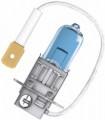Socket
The type of base used in the lamp.
The base is the contact part of the lamp, which is fixed in the socket and is responsible for fixation, electrical connection and the possibility of safe removal. Thus, the type of base directly determines compatibility with a particular cartridge. However, in addition to this, there is also such a parameter as the base of the base. It determines primarily the contact configuration used on a particular base. And in our paragraph it is written as the second value.
In lamps for different purposes (see above), the set of bases used is very different. So, for the head light the following options are used:
D1S,
D1R,
D2S,
D2R, D3S , D3R,
D4S,
D4R,
H1,
H2,
H3,
H4,
H7,
H8,
H9,
H10,
H11,
H13,
H15,
H16,
H27W /1,
H27W/2,
HB1,
HB3,
HB4,
HB5,
HIR2,
HS1,
M5,
R2. For markers and other similar lights, in particular,
C5W,
C10W,
C15W,
H21W,
H6W,
P21W,
PY21W,
P21/4W,
P21/5W,
P27/7W,
PR21W,
R5W,
R10W,
T4W,
W5W,
WY5W,
W16W are used ,
W21W,
WY21W,
W21/5W.
If desired, you can find a detailed explanation of each designation in special sources.
Brightness
Luminous flux produced by a car lamp; for dual-mode models like bi-xenon (see “Type”), the value at maximum brightness is indicated.
This parameter characterizes the actual brightness and efficiency of the lamp; it can be used to directly evaluate and compare different models, regardless of their type and power consumption (but only at the same color temperature - see below for more details). The brightest are headlight lamps (see “Purpose”), in them this indicator can
exceed 4000 lm and vary noticeably from model to model. Therefore, when choosing such a lamp, you should pay special attention to the characteristics of the luminous flux. It should be borne in mind that too bright headlights are just as undesirable as too dim ones: high brightness creates not only the risk of dazzling for oncoming cars, but also discomfort for the driver himself. Optimal luminous flux values can be indicated in the documents for the car or for the headlight itself; if such data is not available, you can turn to other special sources.
As for other types of lamps, in models for auxiliary lighting the luminous flux is up to 800 lm, and in lamps for the instrument panel - up to 55 lm. Moreover, in both cases, the brightness is selected by the manufacturer taking into account the specific specialization and location of the lamp, so in such models this parameter is not a key one.
Colour temperature
The colour temperature of the light emitted by the lamp. The overall colour of the glow depends on this indicator; and note that the higher the colour temperature, the more “cold” the light looks, the closer it is to blue and blue. Traditional incandescent bulbs produce warm light at 2500-3000K, 3000-3500K can be described as "slightly warmer than neutral", neutral white corresponds to temperatures of
3700-4500K, higher values correspond to cooler shades, and temperatures
over 5000K characteristic of lamps with a blue (blue) colour of the glow.
Note that in this case the colour temperature of the lamp itself (more precisely, its filament or LED element) is indicated, and not the actual shade of the glow that it will give out; for the difference between these indicators, see "Glow colour". Also note here that it is possible to evaluate the shade of light by colour temperature in headlight lamps (see "Intended use"), for which the white colour of the glow is claimed. At the same time, this indicator has a very practical meaning: the warm colour of the light is considered optimal in wet weather, the neutral one gives the highest visible brightness, all other things being equal, and the cold “long-range” one can be subjectively pleasant for some drivers, and can also be used as an element of external tuning.
Lifespan Tc
The maximum continuous lamp operation time. This indicator is quite approximate and the probability that the lamp will work during this period is approximately 1 in 3. This is due to the measurement technique: a control batch of lamps is used until 63.2% of them fail, the resulting time and indicated as "maximum service life". However, the Tc data compared to the B3 guaranteed life (see above) provides a good estimate of the overall lamp life and its ability to last beyond the guaranteed life.
Increased brightness
The level of increased brightness provided by the lamp. This indicator is used by some manufacturers for marketing purposes: it describes how brighter a given model is than some "standard lamps". At the same time, the standards for comparison may be different, and impressive figures (in some models reaching 140%, that is, almost 2.5 times) are not always reliable — that is, a high-brightness lamp will not necessarily be just that much brighter than the “normal” model of the same type and power.

